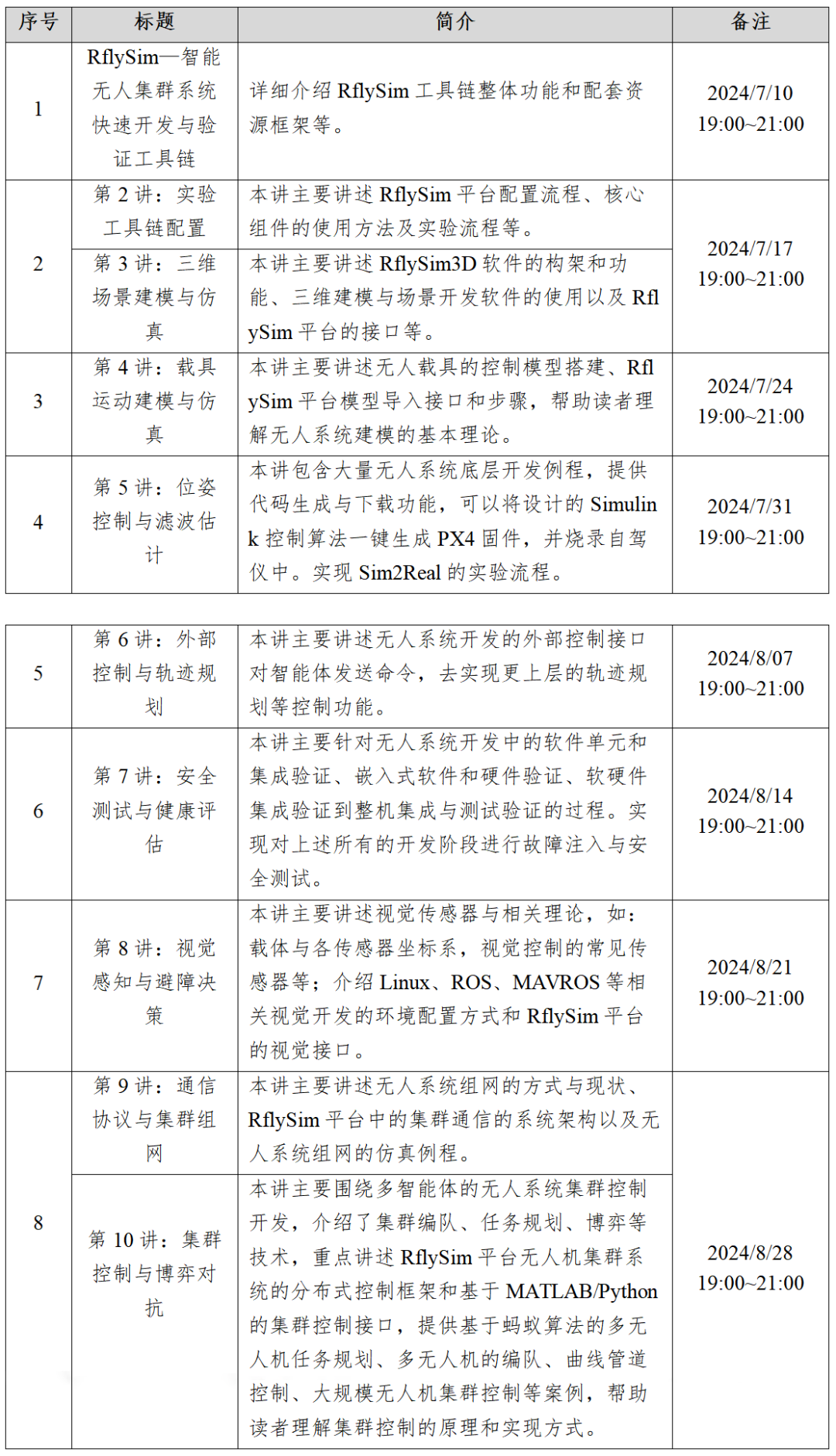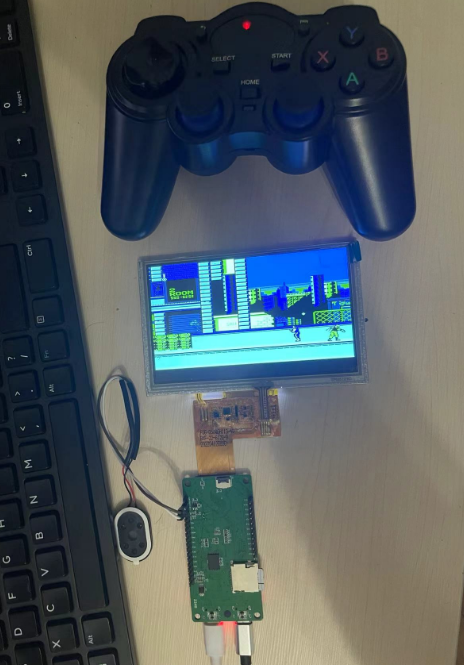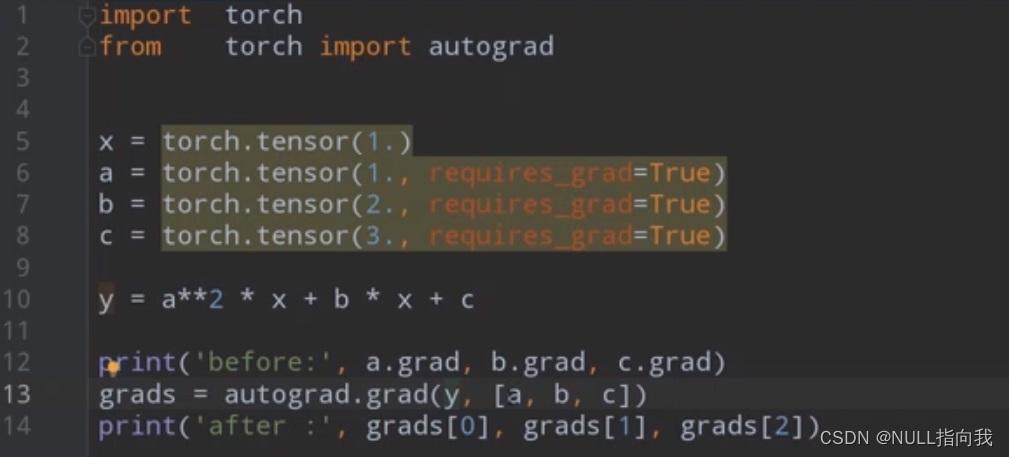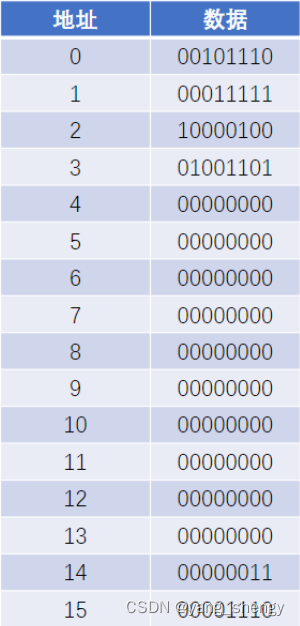1、README
前言
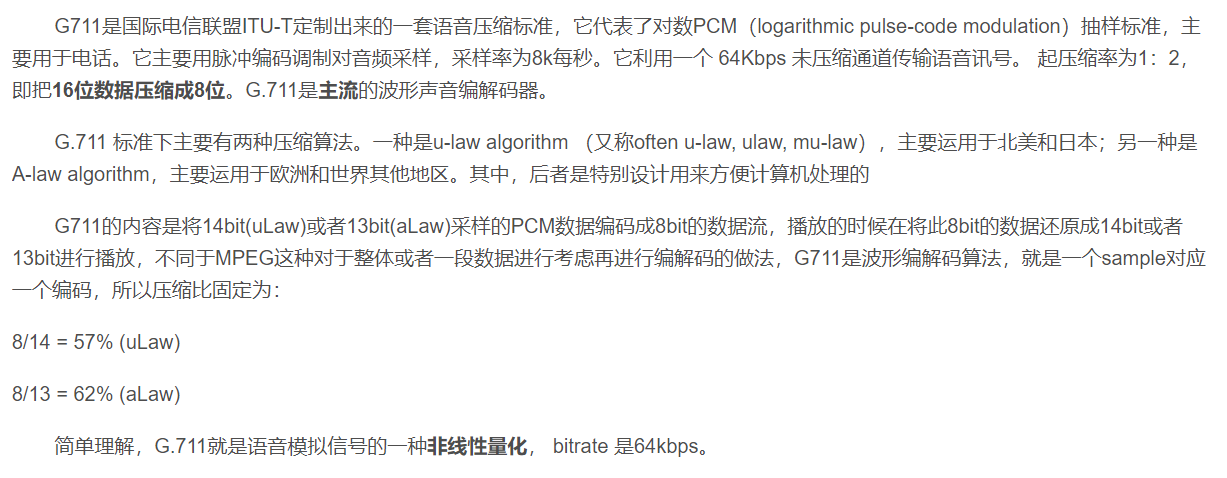
(截图来源:https://blog.csdn.net/u014470361/article/details/88837776)
我的理解:
首先需要知道的是u-law/a-law是用于脉冲编码的压缩/解压缩算法。而G.711是指在8KHz采样率(单声道)中,使用的u-law或a-law算法对音频进行压缩的一种语音压缩标准。但是,使用这两种压缩算法进行压缩的音频并不一定是G.711,要在8KHz采样率(单声道)的才是,压缩其他采样率和多声道得到的u-law/a-law文件只要设置对应的采样率和声道数照样能解压播放。
a. 编译
demo引用了开源代码g711.c和g711.h,然后在此基础上封装成g711_wraper.c和g711_wraper.h,并编写自己的测试程序main.c进行验证。整个demo程序共5个源文件,可以编译到任意环境下使用(非类Unix系统可能需要简单调整main.c中包含的头文件):
$ make # 或者: make CC=your-crosscompile-gcc
b. 使用
examples:
./pcm_alaw_ulaw -h
./pcm_alaw_ulaw --help
./pcm_alaw_ulaw -m pcm_2_alaw -i ./audio/test_8000_16_1.pcm -o ./test_8000_8_1.g711a
./pcm_alaw_ulaw -m pcm_2_ulaw -i ./audio/test_8000_16_1.pcm -o ./test_8000_8_1.g711u
./pcm_alaw_ulaw -m alaw_2_pcm -i ./audio/test_8000_8_1.g711a -o ./test_8000_16_1.pcm
./pcm_alaw_ulaw -m ulaw_2_pcm -i ./audio/test_8000_8_1.g711u -o ./test_8000_16_1.pcm
./pcm_alaw_ulaw -m alaw_2_ulaw -i ./audio/test_8000_8_1.g711a -o ./test_8000_8_1.g711u
./pcm_alaw_ulaw -m ulaw_2_alaw -i ./audio/test_8000_8_1.g711u -o ./test_8000_8_1.g711a
./pcm_alaw_ulaw --mode pcm_2_ulaw --input_file=./audio/test_8000_16_2.pcm --output_file=./test_8000_8_2.ulaw
./pcm_alaw_ulaw --mode pcm_2_ulaw --input_file=./audio/test_22050_16_1.pcm --output_file=./test_22050_8_1.ulaw
./pcm_alaw_ulaw --mode pcm_2_alaw --input_file=./audio/test_44100_16_2.pcm --output_file=./test_44100_8_2.alaw
...
[mode: pcm_2_alaw | pcm_2_ulaw | alaw_2_pcm | ulaw_2_pcm | alaw_2_ulaw | ulaw_2_alaw]
c. demo目录架构
.
├── audio
│ ├── test_22050_16_1.pcm
│ ├── test_22050_8_1.ulaw
│ ├── test_44100_16_2.pcm
│ ├── test_44100_8_2.alaw
│ ├── test_8000_16_1.pcm
│ ├── test_8000_16_2.pcm
│ ├── test_8000_8_1.g711a
│ ├── test_8000_8_1.g711u
│ └── test_8000_8_2.ulaw
├── docs
│ ├── G711编码原理及代码_szfhy的博客-CSDN博客_g711编码.mhtml
│ └── 音频采样及编解码——LPCM 、ADPCM、G711、G726、AAC_夜风的博客-CSDN博客_adpcm.mhtml
├── main.c
├── Makefile
├── pcm_aulaw.c
├── pcm_aulaw.h
├── pcm_aulaw_wraper.c
├── pcm_aulaw_wraper.h
└── README.md
2、主要代码片段
pcm_aulaw.c
/*
* This source code is a product of Sun Microsystems, Inc. and is provided
* for unrestricted use. Users may copy or modify this source code without
* charge.
*
* SUN SOURCE CODE IS PROVIDED AS IS WITH NO WARRANTIES OF ANY KIND INCLUDING
* THE WARRANTIES OF DESIGN, MERCHANTIBILITY AND FITNESS FOR A PARTICULAR
* PURPOSE, OR ARISING FROM A COURSE OF DEALING, USAGE OR TRADE PRACTICE.
*
* Sun source code is provided with no support and without any obligation on
* the part of Sun Microsystems, Inc. to assist in its use, correction,
* modification or enhancement.
*
* SUN MICROSYSTEMS, INC. SHALL HAVE NO LIABILITY WITH RESPECT TO THE
* INFRINGEMENT OF COPYRIGHTS, TRADE SECRETS OR ANY PATENTS BY THIS SOFTWARE
* OR ANY PART THEREOF.
*
* In no event will Sun Microsystems, Inc. be liable for any lost revenue
* or profits or other special, indirect and consequential damages, even if
* Sun has been advised of the possibility of such damages.
*
* Sun Microsystems, Inc.
* 2550 Garcia Avenue
* Mountain View, California 94043
*/
/*
* December 30, 1994:
* Functions linear2alaw, linear2ulaw have been updated to correctly
* convert unquantized 16 bit values.
* Tables for direct u- to A-law and A- to u-law conversions have been
* corrected.
* Borge Lindberg, Center for PersonKommunikation, Aalborg University.
* bli@cpk.auc.dk
*
*/
/*
* Downloaded from comp.speech site in Cambridge.
*
*/
#include "pcm_aulaw.h"
/*
* pcm_aulaw.c
*
* u-law, A-law and linear PCM conversions.
* Source: http://www.speech.kth.se/cost250/refsys/latest/src/g711.c
*/
#define SIGN_BIT (0x80) /* Sign bit for a A-law byte. */
#define QUANT_MASK (0xf) /* Quantization field mask. */
#define NSEGS (8) /* Number of A-law segments. */
#define SEG_SHIFT (4) /* Left shift for segment number. */
#define SEG_MASK (0x70) /* Segment field mask. */
static short seg_aend[8] = {0x1F, 0x3F, 0x7F, 0xFF,
0x1FF, 0x3FF, 0x7FF, 0xFFF};
static short seg_uend[8] = {0x3F, 0x7F, 0xFF, 0x1FF,
0x3FF, 0x7FF, 0xFFF, 0x1FFF};
/* copy from CCITT G.711 specifications */
unsigned char _u2a[128] = { /* u- to A-law conversions */
1, 1, 2, 2, 3, 3, 4, 4,
5, 5, 6, 6, 7, 7, 8, 8,
9, 10, 11, 12, 13, 14, 15, 16,
17, 18, 19, 20, 21, 22, 23, 24,
25, 27, 29, 31, 33, 34, 35, 36,
37, 38, 39, 40, 41, 42, 43, 44,
46, 48, 49, 50, 51, 52, 53, 54,
55, 56, 57, 58, 59, 60, 61, 62,
64, 65, 66, 67, 68, 69, 70, 71,
72, 73, 74, 75, 76, 77, 78, 79,
/* corrected:
81, 82, 83, 84, 85, 86, 87, 88,
should be: */
80, 82, 83, 84, 85, 86, 87, 88,
89, 90, 91, 92, 93, 94, 95, 96,
97, 98, 99, 100, 101, 102, 103, 104,
105, 106, 107, 108, 109, 110, 111, 112,
113, 114, 115, 116, 117, 118, 119, 120,
121, 122, 123, 124, 125, 126, 127, 128};
unsigned char _a2u[128] = { /* A- to u-law conversions */
1, 3, 5, 7, 9, 11, 13, 15,
16, 17, 18, 19, 20, 21, 22, 23,
24, 25, 26, 27, 28, 29, 30, 31,
32, 32, 33, 33, 34, 34, 35, 35,
36, 37, 38, 39, 40, 41, 42, 43,
44, 45, 46, 47, 48, 48, 49, 49,
50, 51, 52, 53, 54, 55, 56, 57,
58, 59, 60, 61, 62, 63, 64, 64,
65, 66, 67, 68, 69, 70, 71, 72,
/* corrected:
73, 74, 75, 76, 77, 78, 79, 79,
should be: */
73, 74, 75, 76, 77, 78, 79, 80,
80, 81, 82, 83, 84, 85, 86, 87,
88, 89, 90, 91, 92, 93, 94, 95,
96, 97, 98, 99, 100, 101, 102, 103,
104, 105, 106, 107, 108, 109, 110, 111,
112, 113, 114, 115, 116, 117, 118, 119,
120, 121, 122, 123, 124, 125, 126, 127};
static short search(
short val,
short *table,
short size)
{
short i;
for (i = 0; i < size; i++) {
if (val <= *table++)
return (i);
}
return (size);
}
/*
* linear2alaw() - Convert a 16-bit linear PCM value to 8-bit A-law
*
* linear2alaw() accepts an 16-bit integer and encodes it as A-law data.
*
* Linear Input Code Compressed Code
* ------------------------ ---------------
* 0000000wxyza 000wxyz
* 0000001wxyza 001wxyz
* 000001wxyzab 010wxyz
* 00001wxyzabc 011wxyz
* 0001wxyzabcd 100wxyz
* 001wxyzabcde 101wxyz
* 01wxyzabcdef 110wxyz
* 1wxyzabcdefg 111wxyz
*
* For further information see John C. Bellamy's Digital Telephony, 1982,
* John Wiley & Sons, pps 98-111 and 472-476.
*/
unsigned char
linear2alaw(short pcm_val) /* 2's complement (16-bit range) */
{
short mask;
short seg;
unsigned char aval;
pcm_val = pcm_val >> 3;
if (pcm_val >= 0) {
mask = 0xD5; /* sign (7th) bit = 1 */
} else {
mask = 0x55; /* sign bit = 0 */
pcm_val = -pcm_val - 1;
}
/* Convert the scaled magnitude to segment number. */
seg = search(pcm_val, seg_aend, 8);
/* Combine the sign, segment, and quantization bits. */
if (seg >= 8) /* out of range, return maximum value. */
return (unsigned char) (0x7F ^ mask);
else {
aval = (unsigned char) seg << SEG_SHIFT;
if (seg < 2)
aval |= (pcm_val >> 1) & QUANT_MASK;
else
aval |= (pcm_val >> seg) & QUANT_MASK;
return (aval ^ mask);
}
}
/*
* alaw2linear() - Convert an A-law value to 16-bit linear PCM
*
*/
short
alaw2linear(
unsigned char a_val)
{
short t;
short seg;
a_val ^= 0x55;
t = (a_val & QUANT_MASK) << 4;
seg = ((unsigned)a_val & SEG_MASK) >> SEG_SHIFT;
switch (seg) {
case 0:
t += 8;
break;
case 1:
t += 0x108;
break;
default:
t += 0x108;
t <<= seg - 1;
}
return ((a_val & SIGN_BIT) ? t : -t);
}
#define BIAS (0x84) /* Bias for linear code. */
#define CLIP 8159
/*
* linear2ulaw() - Convert a linear PCM value to u-law
*
* In order to simplify the encoding process, the original linear magnitude
* is biased by adding 33 which shifts the encoding range from (0 - 8158) to
* (33 - 8191). The result can be seen in the following encoding table:
*
* Biased Linear Input Code Compressed Code
* ------------------------ ---------------
* 00000001wxyza 000wxyz
* 0000001wxyzab 001wxyz
* 000001wxyzabc 010wxyz
* 00001wxyzabcd 011wxyz
* 0001wxyzabcde 100wxyz
* 001wxyzabcdef 101wxyz
* 01wxyzabcdefg 110wxyz
* 1wxyzabcdefgh 111wxyz
*
* Each biased linear code has a leading 1 which identifies the segment
* number. The value of the segment number is equal to 7 minus the number
* of leading 0's. The quantization interval is directly available as the
* four bits wxyz. * The trailing bits (a - h) are ignored.
*
* Ordinarily the complement of the resulting code word is used for
* transmission, and so the code word is complemented before it is returned.
*
* For further information see John C. Bellamy's Digital Telephony, 1982,
* John Wiley & Sons, pps 98-111 and 472-476.
*/
unsigned char
linear2ulaw(
short pcm_val) /* 2's complement (16-bit range) */
{
short mask;
short seg;
unsigned char uval;
/* Get the sign and the magnitude of the value. */
pcm_val = pcm_val >> 2;
if (pcm_val < 0) {
pcm_val = -pcm_val;
mask = 0x7F;
} else {
mask = 0xFF;
}
if ( pcm_val > CLIP ) pcm_val = CLIP; /* clip the magnitude */
pcm_val += (BIAS >> 2);
/* Convert the scaled magnitude to segment number. */
seg = search(pcm_val, seg_uend, 8);
/*
* Combine the sign, segment, quantization bits;
* and complement the code word.
*/
if (seg >= 8) /* out of range, return maximum value. */
return (unsigned char) (0x7F ^ mask);
else {
uval = (unsigned char) (seg << 4) | ((pcm_val >> (seg + 1)) & 0xF);
return (uval ^ mask);
}
}
/*
* ulaw2linear() - Convert a u-law value to 16-bit linear PCM
*
* First, a biased linear code is derived from the code word. An unbiased
* output can then be obtained by subtracting 33 from the biased code.
*
* Note that this function expects to be passed the complement of the
* original code word. This is in keeping with ISDN conventions.
*/
short
ulaw2linear(
unsigned char u_val)
{
short t;
/* Complement to obtain normal u-law value. */
u_val = ~u_val;
/*
* Extract and bias the quantization bits. Then
* shift up by the segment number and subtract out the bias.
*/
t = ((u_val & QUANT_MASK) << 3) + BIAS;
t <<= ((unsigned)u_val & SEG_MASK) >> SEG_SHIFT;
return ((u_val & SIGN_BIT) ? (BIAS - t) : (t - BIAS));
}
/* A-law to u-law conversion */
unsigned char
alaw2ulaw(
unsigned char aval)
{
aval &= 0xff;
return (unsigned char) ((aval & 0x80) ? (0xFF ^ _a2u[aval ^ 0xD5]) :
(0x7F ^ _a2u[aval ^ 0x55]));
}
/* u-law to A-law conversion */
unsigned char
ulaw2alaw(
unsigned char uval)
{
uval &= 0xff;
return (unsigned char) ((uval & 0x80) ? (0xD5 ^ (_u2a[0xFF ^ uval] - 1)) :
(0x55 ^ (_u2a[0x7F ^ uval] - 1)));
}
/* ---------- end of pcm_aulaw.c ----------------------------------------------------- */
pcm_aulaw_wraper.c
#include "pcm_aulaw.h"
#include "pcm_aulaw_wraper.h"
void pcm_2_alaw(const short *src_16lepcm, unsigned char *dst_alaw, unsigned int sample_cnt)
{
for (int i = 0; i < sample_cnt; i++)
{
dst_alaw[i] = linear2alaw(src_16lepcm[i]);
}
}
void alaw_2_pcm(const unsigned char *src_alaw, short *dst_16lepcm, unsigned int sample_cnt)
{
for (int i = 0; i < sample_cnt; i++)
{
dst_16lepcm[i] = alaw2linear(src_alaw[i]);
}
}
void pcm_2_ulaw(const short *src_16lepcm, unsigned char *dst_ulaw, unsigned int sample_cnt)
{
for (int i = 0; i < sample_cnt; i++)
{
dst_ulaw[i] = linear2ulaw(src_16lepcm[i]);
}
}
void ulaw_2_pcm(const unsigned char *src_ulaw, short *dst_16lepcm, unsigned int sample_cnt)
{
for (int i = 0; i < sample_cnt; i++)
{
dst_16lepcm[i] = ulaw2linear(src_ulaw[i]);
}
}
void alaw_2_ulaw(const unsigned char *src_alaw, char *dst_ulaw, unsigned int sample_cnt)
{
for (int i = 0; i < sample_cnt; i++)
{
dst_ulaw[i] = alaw2ulaw(src_alaw[i]);
}
}
void ulaw_2_alaw(const unsigned char *src_ulaw, char *dst_alaw, unsigned int sample_cnt)
{
for (int i = 0; i < sample_cnt; i++)
{
dst_alaw[i] = ulaw2alaw(src_ulaw[i]);
}
}
main.c
#include <stdio.h>
#include <string.h>
#include <getopt.h>
#include <unistd.h>
#include "pcm_aulaw_wraper.h"
void print_usage(const char *process)
{
printf("examples: \n"
"\t %s -h\n"
"\t %s --help\n"
"\t %s -m pcm_2_alaw -i ./audio/test_8000_16_1.pcm -o ./test_8000_8_1.g711a\n"
"\t %s -m pcm_2_ulaw -i ./audio/test_8000_16_1.pcm -o ./test_8000_8_1.g711u\n"
"\t %s -m alaw_2_pcm -i ./audio/test_8000_8_1.g711a -o ./test_8000_16_1.pcm\n"
"\t %s -m ulaw_2_pcm -i ./audio/test_8000_8_1.g711u -o ./test_8000_16_1.pcm\n"
"\t %s -m alaw_2_ulaw -i ./audio/test_8000_8_1.g711a -o ./test_8000_8_1.g711u\n"
"\t %s -m ulaw_2_alaw -i ./audio/test_8000_8_1.g711u -o ./test_8000_8_1.g711a\n"
"\t %s --mode pcm_2_ulaw --input_file=./audio/test_8000_16_2.pcm --output_file=./test_8000_8_2.ulaw\n"
"\t %s --mode pcm_2_ulaw --input_file=./audio/test_22050_16_1.pcm --output_file=./test_22050_8_1.ulaw\n"
"\t %s --mode pcm_2_alaw --input_file=./audio/test_44100_16_2.pcm --output_file=./test_44100_8_2.alaw\n"
"\t ...\n"
"\t [mode: pcm_2_alaw | pcm_2_ulaw | alaw_2_pcm | ulaw_2_pcm | alaw_2_ulaw | ulaw_2_alaw]\n\n",
process, process, process, process, process, process, process, process, process, process, process);
}
#define BUF_LEN (160)
int main(int argc, char **argv)
{
/* 输入/输出文件 */
FILE *fpInput = NULL;
FILE *fpOutput = NULL;
char inputFileName[128] = {0};
char outputFileName[128] = {0};
char inputBuf[BUF_LEN*2] = {0};
char outputBuf[BUF_LEN*2] = {0};
/* 输入文件与输出文件的转换模式 */
char convert_mode[128] = {0};
if (argc == 1)
{
print_usage(argv[0]);
return 0;
}
/* 解析命令行参数 */
char option = 0;
int option_index = 0;
char *short_options = "hm:i:o:";
struct option long_options[] =
{
{"help", no_argument, NULL, 'h'},
{"mode", required_argument, NULL, 'm'},
{"input_file", required_argument, NULL, 'i'},
{"output_file", required_argument, NULL, 'o'},
{NULL, 0, NULL, 0 },
};
while((option = getopt_long_only(argc, argv, short_options, long_options, &option_index)) != -1)
{
switch(option)
{
case 'h':
print_usage(argv[0]);
return 0;
case 'm':
strncpy(convert_mode, optarg, 128);
break;
case 'i':
strncpy(inputFileName, optarg, 128);
break;
case 'o':
strncpy(outputFileName, optarg, 128);
break;
defalut:
printf("Unknown argument!\n");
break;
}
}
fpInput = fopen(inputFileName, "rb");
if (fpInput == NULL)
{
perror("Open input file error");
return -1;
}
fpOutput = fopen(outputFileName, "wb");
if (fpOutput == NULL)
{
perror("Open output file error");
return -1;
}
while(1)
{
/* read data */
int readBytes = fread(inputBuf, 1, BUF_LEN, fpInput);
if (readBytes <= 0)
{
break;
}
/* convert and write data */
if(0 == strcmp(convert_mode, "pcm_2_alaw"))
{
pcm_2_alaw((const short *)inputBuf, outputBuf, readBytes/2);
fwrite(outputBuf, 1, readBytes/2, fpOutput);
}
else if(0 == strcmp(convert_mode, "pcm_2_ulaw"))
{
pcm_2_ulaw((const short *)inputBuf, outputBuf, readBytes/2);
fwrite(outputBuf, 1, readBytes/2, fpOutput);
}
else if(0 == strcmp(convert_mode, "alaw_2_pcm"))
{
alaw_2_pcm(inputBuf, (short *)outputBuf, readBytes);
fwrite(outputBuf, 1, readBytes*2, fpOutput);
}
else if(0 == strcmp(convert_mode, "ulaw_2_pcm"))
{
ulaw_2_pcm(inputBuf, (short *)outputBuf, readBytes);
fwrite(outputBuf, 1, readBytes*2, fpOutput);
}
else if(0 == strcmp(convert_mode, "alaw_2_ulaw"))
{
alaw_2_ulaw(inputBuf, outputBuf, readBytes);
fwrite(outputBuf, 1, readBytes, fpOutput);
}
else if(0 == strcmp(convert_mode, "ulaw_2_alaw"))
{
ulaw_2_alaw(inputBuf, outputBuf, readBytes);
fwrite(outputBuf, 1, readBytes, fpOutput);
}
else
{
printf("The convert mode is not supported!\n");
goto error_exit;
}
}
printf("\033[32m %s ==> %s Success!\033[0m\n", inputFileName, outputFileName);
error_exit:
fclose(fpInput);
fclose(fpOutput);
return 0;
}
3、demo下载地址(任选一个)
-
https://download.csdn.net/download/weixin_44498318/89525479
-
https://gitee.com/linriming/audio_pcm_alaw_ulaw_g711_convert.git
-
https://github.com/linriming20/audio_pcm_alaw_ulaw_g711_convert.git








